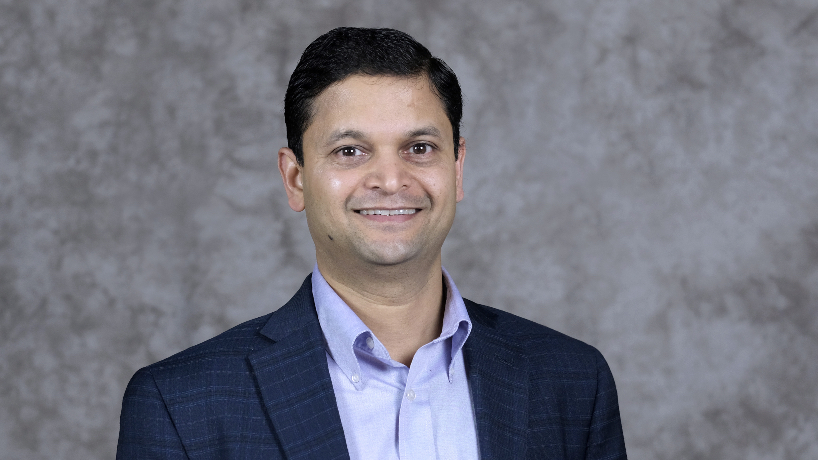
Mayank Jain formed a team of 22 volunteers to sew and distribute fabric masks to doctors and nurses at St. Louis hospitals that are experiencing a shortage of personal protective equipment during the COVID-19 pandemic. (Photo by August Jennewein)
When Mayank Jain’s wife needed an N95 mask for her job as a physician, Jain encountered a problem. He couldn’t find one.
The novel coronavirus has led to a shortage of personal protective equipment at hospitals across the United States, and Jain was determined to find a way to help.
“We are at war with this pandemic, and health care workers do not have sufficient ammunition,” he said. “While we are social distancing, doctors and nurses have to actually go in the room to see the patient. We need to protect them as much as possible.”
A first-year student in the Professional MBA program at the University of Missouri–St. Louis College of Business Administration enlisted the help of two friends, Lalit Bist and Priti Jain, and the trio landed on an idea to make and distribute fabric masks to health-care workers who needed them.
The project began as an initiative of HindiUSA, an organization that teaches the Hindi language. Jain founded the St. Louis branch two years ago and serves as the school coordinator.
He and his team used the HindiUSA St. Louis Facebook page to recruit volunteers and let health care workers know about the project. They created a Google form that allows hospitals and individuals to request masks, and they called local hospitals to offer their services.
They also used SignUpGenius to recruit volunteers, and the team of three quickly grew to 22 people.
“We started it as a HindiUSA initiative, but people from different backgrounds have also joined us,” Jain said. “A diverse crowd has now formed. It’s amazing to see how they’re coming together.”
Each mask, sewn by volunteers, includes three layers of fabric. Jain points out that they are not a substitute for N95 masks, which are usually worn once and discarded. Fabric masks are worn over N95 masks to prolong their life and preserve resources.
So far, the group has completed around 1,000 masks and distributed more than 850 of them. Requests range in size from 20 to 300 masks.
It takes approximately 30 to 40 minutes to construct a mask, a significant improvement over the three hours it took team members to complete their first mask. The distribution process requires more time, as volunteers take precautions against spreading COVID-19.
“We recommend all of our volunteers wear masks,” Jain said. “Four people do pickup, dispatch and drop-off at hospitals. They drive around once a week. They put it in a plastic bag and drop it outside on the porch of somebody’s house, just like a mailman. We recommend the receiver pick it up after 24 hours, because the virus dies down depending on the surface.”
When he’s not coordinating distribution and recruiting volunteers, Jain works as an IT manager at Ernst & Young and teaches weekly classes for HindiUSA. He’s also pursuing his PMBA in a program that includes online content and monthly classes, which are currently being held via Zoom.
“I wanted to find a school that would fit my schedule, be cost effective and provide value,” he said. “UMSL fit my needs. It’s been a great experience so far. They have the right curriculum. They have amazing professors and so many resources. I’m very impressed.”
Through his current initiative to support health care workers, Jain and his team have raised $2,000 and placed orders for 1,000 gloves, 900 shoe covers, boxes of cleaning wipes and limited supplies of N95 masks to be donated to hospitals.
The team also organized an April 12 webinar on best practices during the pandemic, which featured the chief medical officer at the University Medical Center New Orleans and an intensive care unit physician from SSM Health St. Mary’s Hospital–St. Louis. Fifty participants attended the online event.
“It’s been an amazing experience to bring people together and meet like-minded people,” he said. “I can see that energy and enthusiasm. I would recommend that everybody come forward and help with what they can to support our community. It’s very satisfying to help these people and be part of this fight.”
If you’re interested in volunteering to create masks, click here.
To request a mask, click here.
For more information about the project, click here.














